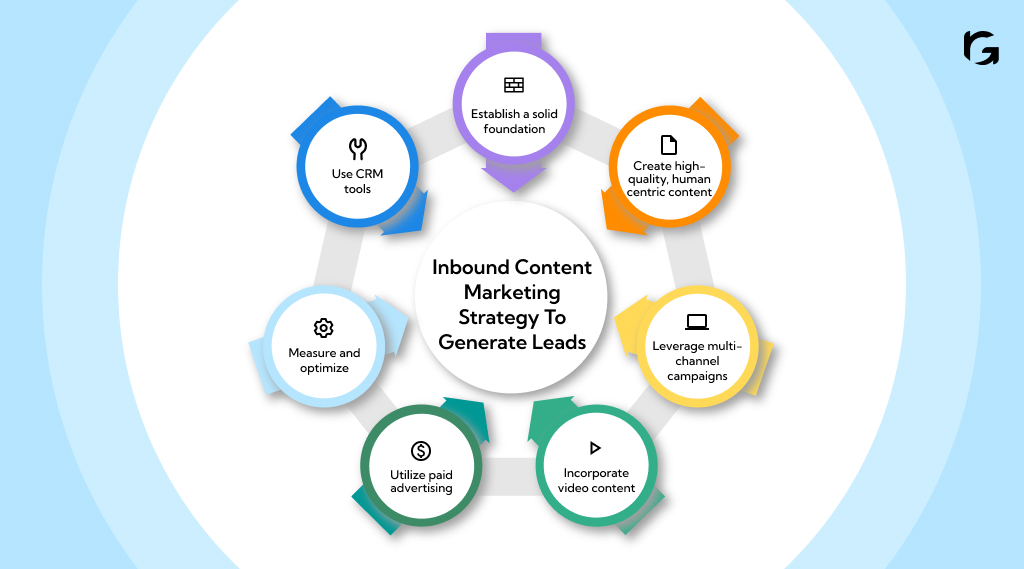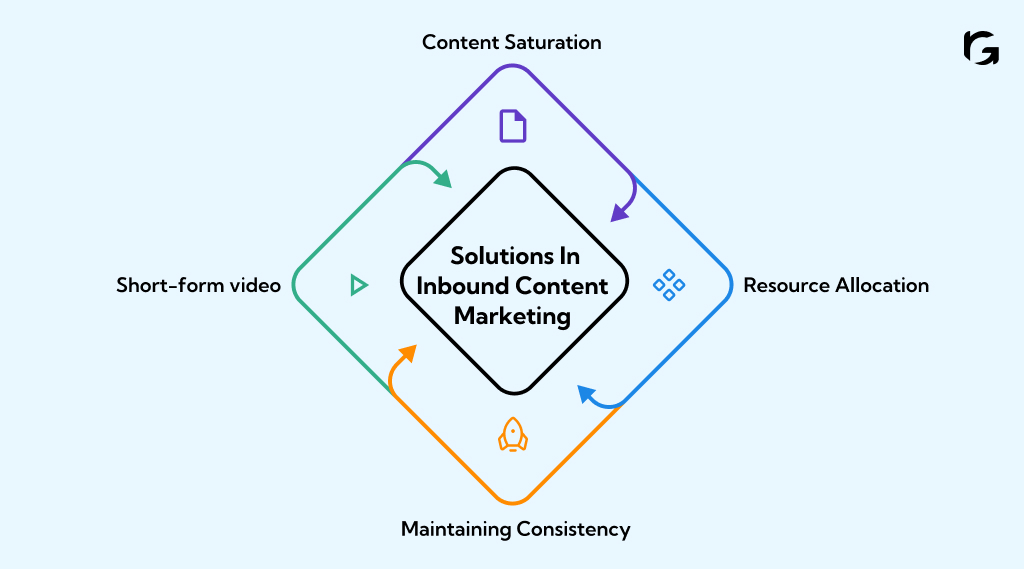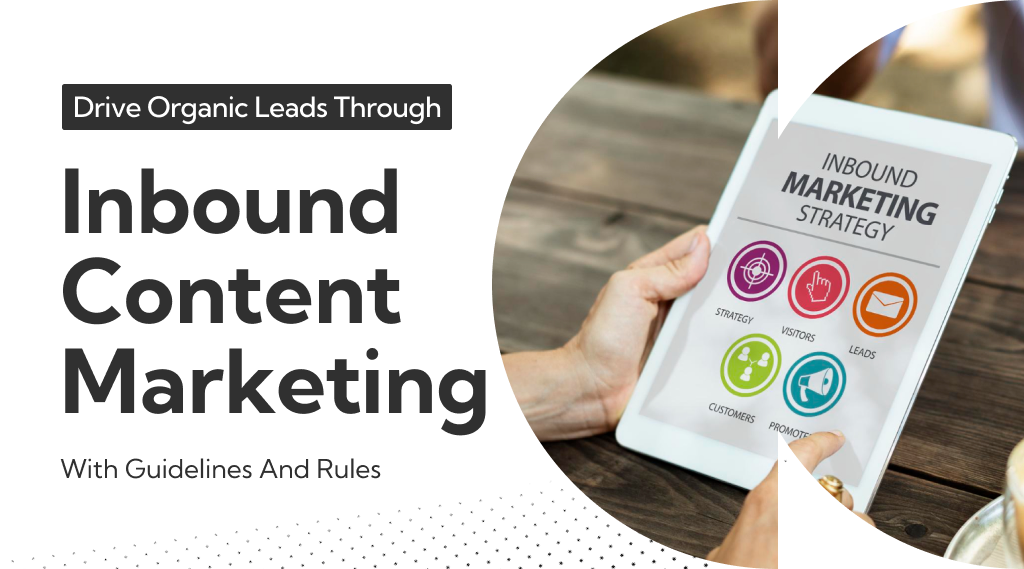Introduction
What if your marketing could naturally draw in customers instead of chasing them down? Inbound content marketing is designed to do just that. Unlike outbound marketing, which interrupts potential customers with ads and cold calls, inbound marketing attracts them with valuable content they are already searching for.
By reading this guide, you’ll gain practical insights to enhance your marketing strategy in 2024. You’ll learn how to attract, nurture, and convert leads, fostering long-term customer relationships and driving sustainable growth. Whether you’re aiming to boost lead generation, improve customer engagement, or increase conversions, this comprehensive resource provides the tools and techniques you need to succeed.
Discover how these inbound marketing strategies can transform your business and elevate your marketing efforts in 2024.
Understanding inbound content marketing
Inbound content marketing is a strategy focused on creating valuable, relevant content to attract and engage your target audience. Instead of pushing products, it pulls customers in by addressing their needs and interests.
Consider a SaaS company offering project management software. Traditional outbound marketing might involve sending unsolicited emails or cold-calling potential clients, interrupting their daily workflow. Inbound marketing, on the other hand, involves creating blog posts, whitepapers, or webinars on topics like “How to Streamline Project Management” or “Top 5 Productivity Tips for Remote Teams.”
Everyday consumers are bombarded with ads and have become adept at ignoring them. Inbound marketing is crucial because it aligns with how modern consumers make purchasing decisions—they research online, seek authentic content, and value personalized experiences. By leveraging inbound techniques, businesses can build deeper connections with their audience, leading to higher engagement and loyalty. As digital world evolve, the importance of delivering meaningful, customer-centric content continues to grow.
Key benefits of inbound content marketing
- Brand crediblity
- Cost effectiveness
- Targeted audience engagement
- Long term customer relationship
- SEO and online visibility
Brand credibility
Sharing valuable information positions your business as an expert. For instance, a SaaS company offering detailed guides on project management helps solve customer problems and builds trust. This trust increases the likelihood of customers selecting your brand.
Cost-effectiveness
Inbound marketing reduces costs by utilizing organic traffic effectively. Instead of spending heavily on ads, you create high-quality content that attracts visitors naturally through search engines and social media. A well-optimized blog post can generate traffic and leads for months or even years, providing a higher return on investment.
Targeted audience engagement
By tailoring content to your ideal customers, you attract more qualified leads. For example, a SaaS company can create content specifically for small business owners and enterprise clients, addressing their unique needs and increasing conversion rates.
Long-term customer relationships
Providing regular, valuable content fosters enduring relationships with your audience. Regular newsletters and follow-up emails with helpful tips can keep customers engaged and loyal, fostering sustained growth.
SEO and online visibility
Enhancing your content for search engines improves your online visibility. By using SEO best practices, your content can rank higher in search results, making it easier for potential customers to find you. This approach helps attract more organic traffic and boosts your online presence.
Core components of inbound content marketing
- Content creation
- SEO
- Social media engagement
- Email marketing
- Lead nurturing
Content creation
SaaS companies excel by creating diverse content to engage their audience. For instance, HubSpot creates detailed blogs, captivating videos, and educational infographics. Their blog covers marketing tips and software tutorials, attracting potential customers. Videos like product demos and customer testimonials highlight their software’s benefits, while infographics simplify complex data. By offering varied content, HubSpot caters to different preferences, keeping their audience engaged.
SEO
Optimizing content for search engines is crucial. Moz, an SEO tool provider, exemplifies best practices like keyword research and on-page optimization. Their beginner’s guide to SEO ranks highly on search engines, driving significant organic traffic. Moz ensures their content is relevant and valuable, optimized with the right keywords, meta tags, and internal linking. This strategy helps attract users searching for SEO solutions.
Social media engagement
Effective use of social platforms boosts engagement and reach. Salesforce shares customer success stories, live event updates, and interactive content on platforms like LinkedIn and Twitter. By engaging with their audience, Salesforce builds a community and fosters brand loyalty. Their social media presence not only humanizes the brand but also offers real-time customer interaction and support.
Email marketing
Personalizing and automating email campaigns enhances customer engagement. Mailchimp segments their audience based on behavior and preferences, sending targeted emails that resonate. New users receive onboarding emails with tips, while existing customers get updates on new features. Automation ensures timely, relevant communication, improving the user experience and increasing conversions.
SaaS Email Marketing: A Complete Guide to Increase Conversions
Lead nurturing
Guiding leads through the sales funnel is key for conversions. Intercom uses educational content and personalized follow-ups to nurture leads. They offer onboarding emails, webinars, and case studies to demonstrate their product’s value. By tracking user interactions, Intercom tailors follow-up messages to address specific pain points, moving leads closer to purchasing.
How to develop an inbound content marketing strategy to generate leads?
Want to attract more leads and drive growth? Combining strategic planning with lead generation tactics is the way to go. Let’s learn how to create an inbound content marketing strategy that not only draws in potential customers but also converts them into loyal clients:

- Establish a solid foundation
- Create high-quality, human-centric content
- Leverage multi-channel campaigns
- Incorporate video content
- Utilize paid advertising
- Measure and optimize
- Use CRM tools
1. Establish a solid foundation
Website optimization
Your website needs to look good and work fast. Think of it as your digital storefront. If it’s not appealing or takes too long to load, visitors will leave. Make sure you have clear, engaging calls to action (CTAs) like “Download Now” or “Sign Up for Free Trial.” A resource centre with blogs, e-books, webinars, and easy-to-use forms is crucial for providing value and capturing visitor information.
Technical SEO audit
Ensure your site is technically sound by running an SEO audit to fix issues that might hurt your search rankings. Perform detailed keyword research to determine what your target audience is searching for. Track these keywords to monitor your site’s performance in search results and adjust your strategy to attract more organic traffic.
2. Create high-quality, human-centric content
Understand your audience
Make sure your content speaks directly to your audience’s pain points and interests. Rather than stuffing your content with keywords, focus on crafting meaningful and engaging material. Think about what your audience needs and how you can provide real value to them.
Diverse content types
Use a variety of content types to keep things interesting and cater to different stages of the buyer’s journey. This could include e-books, guides, FAQs, blogs, and checklists. For example, an e-book can provide in-depth knowledge, while a blog post can offer quick tips and updates. This mix keeps your audience engaged and helps you address their needs at every stage.
3. Leverage multi-channel campaigns
Vertical strategy
Focus on one product or service at a time and create targeted campaigns. For example, if you’re launching a new project management tool, tailor your campaign specifically to project managers, highlighting features that solve their unique challenges.
Email marketing
Use email campaigns to promote new offerings. Incorporate clear CTAs and engaging visuals to capture attention. Customize your content to ensure it resonates with different segments of your audience. For instance, send detailed feature updates to existing users and introductory guides to new subscribers.
Social media
Create personalized content for each social media platform. Focus on quality over quantity. For example, share in-depth articles and thought leadership pieces on LinkedIn, quick tips and visuals on Instagram, and engaging discussions on Twitter. Utilize these platforms to showcase your expertise and drive traffic to your website.
4. Incorporate video content
Video marketing
Leverage video to boost engagement and convey your message clearly. Create explainer videos to simplify complex concepts. For example, a SaaS company might produce a video showing step-by-step how to use their software. Host live webinars for real-time interaction, allowing you to answer questions and demonstrate features live. Use short videos on social media to capture attention quickly. Videos are highly engaging and prioritized by platforms, helping you reach a broader audience effectively.
5. Utilize paid advertising
Paid campaigns
Enhance your inbound marketing with targeted paid ads. Use LinkedIn ads to reach industry professionals or Google Ads for relevant search queries. For instance, if you’re marketing a project management tool, target ads at project managers searching for new software solutions. Paid campaigns can quickly drive traffic to your content, boosting visibility and complementing your organic efforts. Monitor and adjust your ads to maximize ROI and achieve faster results.
6. Measure and optimize
Track metrics
Regularly monitor key metrics to evaluate the effectiveness of your efforts. Check keyword rankings to track your SEO success. Keep an eye on organic search traffic, conversions, click-through rates, bounce rates, and time on site. For example, if you notice a high bounce rate, it might mean your content isn’t engaging enough, prompting you to make changes.
Lead quality
Implement a lead scoring system to assess the quality of your leads. Assign points based on how users interact with your content. If leads who download e-books are more likely to convert, focus on creating and promoting more e-books. Adjust your content strategy based on these insights to improve lead quality.
7. Use CRM tools
CRM integration
Use customer relationship management (CRM) systems to manage your leads effectively. Tools like Salesforce or HubSpot help track every interaction a lead has with your brand, from their first visit to your website to their latest email open. This view helps tailor your marketing efforts and ensures no lead is overlooked. CRMs also automate follow-ups and personalize communications, making your marketing more effective and scalable.
Common challenges and solutions in inbound content marketing

- Content saturation
- Resource allocation
- Maintaining consistency
- Short-form video
Content saturation: standing out in a crowded market
There is an overwhelming amount of content being produced, making it hard for brands to capture attention and differentiate themselves.
Pain points:
- Getting lost among the flood of generic, low-quality content
- Struggling to resonate with the right audience
- Difficulty standing out in search results and social feeds
Solution:
- Audience research: Conduct audience research to understand their pain points, interests, and preferred content formats. For example, if your audience prefers video tutorials over long articles, focus on creating engaging videos.
- Unique angle: Find a unique perspective that sets you apart. For instance, offer behind-the-scenes insights or expert interviews that competitors aren’t providing.
Resource allocation: managing budget and team effectively
Ongoing investment in content creation, promotion, and measurement can be hard to manage within budget constraints.
Pain Points:
- Limited budget for high-quality content production
- Insufficient internal expertise and bandwidth
- Measuring the ROI of content marketing efforts is challenging
Solution:
- Clear strategy: Develop a content strategy that aligns with business goals. Allocate resources to the most impactful areas, focusing on high-converting content types.
- Leverage expertise: Interview subject matter experts within your organization and repurpose their knowledge into content. This saves time and ensures high-quality insights.
Maintaining consistency: keeping up with content production and quality
Consistently creating high-quality content requires a well-structured process and dedicated resources.
Pain points:
- Difficulty maintaining a steady flow of content
- Inconsistent quality and tone
- Lack of clear ownership and accountability
Solution:
- Guidelines and templates: Establish content guidelines and templates to maintain quality and consistency across all pieces.
- Dedicated team: Assign specific roles for content creation and editing to ensure accountability and streamline the process.
Short-form video: the rise of platforms like TikTok and Instagram reels
Short-form video content is booming, especially among younger audiences. Brands need to adapt their strategies to include this format.
Pain points:
- Lack of experience in creating engaging short-form videos
- Measuring the impact of short-form video on business goals
- Deciding which platforms and formats to prioritize
Solution:
- Experimentation: Try different short-form video formats and styles to see what resonates with your audience. For example, use TikTok for behind-the-scenes content and Instagram Reels for quick tips and product showcases.
- Collaboration: Work with influencers who have a strong presence on these platforms to broaden your reach.
Conclusion
Inbound content marketing is a game-changer for attracting, engaging, and converting your audience. By creating valuable content, optimizing your website, leveraging multiple channels, and using video and paid ads, you can stand out and drive growth.
First, get your website in top shape with good design and a solid SEO audit. Then, focus on high-quality, human-centric content that speaks to your audience’s needs. Mix it up with blogs, e-books, and videos. Keep your audience engaged and interested through email and social media campaigns.Don’t forget to add engaging videos like explainer clips and webinars. Paid ads can give your efforts a boost by driving targeted traffic. Track your results with key metrics and use CRM tools to manage leads effectively.
Following these steps will help you build a strong inbound marketing strategy that turns leads into loyal customers. For further guidance, reach out to our team for expert advice.
Partner with RevvGrowth to grow your business. We help you craft tailored product marketing strategies, monitor key performance indicators, and stay ahead of the competition while boosting your revenue.
FAQs
1. What are the 5 Inbound Principles?
– The 5 inbound principles are attract, convert, close, delight, and adapt. These guide your strategy from drawing in visitors to nurturing and retaining customers.
2. How to Set the Right Inbound Content Marketing Goals?
– Set SMART goals: Specific, Measurable, Achievable, Relevant, and Time-bound. Align them with your business objectives and track progress regularly.
3. What Are The Three Rules Of Content Inbound Marketing?
– Focus on your audience’s needs, prioritize quality over quantity, and maintain consistent engagement to build trust and drive conversions.
4. What is an example of inbound marketing?
– Creating a blog with valuable content that answers potential customers’ questions, optimized for search engines to attract organic traffic, is a classic example of inbound marketing.
5. How can I measure the success of my inbound marketing strategy?
– Track metrics such as website traffic, lead generation, conversion rates, and customer engagement to assess the effectiveness of your inbound marketing efforts.



